Central Vivarium Sterilizer Installation
中央饲养室灭菌器安装
基本信息
- 批准号:8711607
- 负责人:
- 金额:$ 50万
- 依托单位:
- 依托单位国家:美国
- 项目类别:
- 财政年份:2014
- 资助国家:美国
- 起止时间:2014-06-01 至 2016-05-31
- 项目状态:已结题
- 来源:
- 关键词:AffectAgricultureAmericanAnimal ExperimentationAnimal HousingAnimal ModelAnimalsAreaBasic ScienceBiomedical EngineeringBusinessesCanis familiarisCardiovascular systemCommitCommunicable DiseasesCompanionsDecontaminationDiagnosticDirect CostsDisease OutbreaksEnsureEquipmentFloorFundingGrantGrowthHazardous SubstancesHealthHousingHumanInfection ControlInvestmentsLaboratoriesLaboratory AnimalsLifeMaintenanceMechanicsMovementMusNeurosciencesOperative Surgical ProceduresProcessQuarantineRattusRecoveryResearchResearch PersonnelResourcesRiskRodentSanitationSideSiteSoilSterilizationSterilization for infection controlTimeTranslational ResearchTranslationsTravelUnited States National Institutes of HealthUniversitiesUpdateWorkagedanimal colonyanimal facilityanimal resourcedesignergonomicsexperienceimprovedmedical schoolsmeetingsnonhuman primateoperationpathogenpreventprogramsrepairedsoundsquare footwater conservation
项目摘要
DESCRIPTION (provided by applicant): Duke University is committed to scientific research and its translation to improve human health, including appropriate use of animals in research. The purpose of this proposal is to replace and relocate an aged autoclave located within Duke's Central Vivarium and reallocate space to optimally provide defined quarantine/isolation and animal receiving areas, and to provide the ability to decontaminate suspect caging and equipment from satellite areas. Eighty eight per cent of all mice and rats on campus are housed in barrier areas or facilities that are specifically designed to preclude entry and spread of adventitious agents that may negatively influence research objectives, and non-rodent animals are localized primarily within the Central Vivarium. The specific aims of this proposal essentially
impact all animal researchers at Duke through the quarantine and isolation of 'suspect' animals and the minimizing of cross- contamination potential of infectious animals. Funds from this renovation grant are crucial to: a) replacing a 43-year- old autoclave that is necessary for maintenance of housing for isolation and quarantine in the Central Vivarium as well as for decontamination of caging and equipment from satellite facilities when rodent infectious disease outbreaks occur and b) to provide a quarantine/isolation area that is separate from the general animal housing area. Direct costs from the National Institutes of Health provide about $120 million of funding annually to animal research at Duke. Opened in 1973, the Central Vivarium is the main campus vivarium and remains structurally and operationally sound. This 29,129 net square feet (nsf) facility is arranged on two floors: a small ground floor area houses administrative and diagnostic laboratory space, with animal space located on the first floor. The Central Vivarium can house any laboratory animal species in Duke's program and is the main site for housing and use of USDA-regulated species, including non-human primates, canines, and agricultural species. Caging and equipment are processed in the Central Vivarium cagewash area on the north side of the facility and in a single corridor operation: soiled caging and equipment are removed from the animal rooms and transported into the "dirty side" of cagewash via a single corridor, clean caging and equipment exit mechanical washers directly into the clean side of cagewash. Construction funded through C06 grants from the NIH utilizing American Reinvestment and Recovery Act (ARRA) resources is underway to build 2,731 nsf to meet the needs of biomedical engineering researchers that require specialized procedural areas and large animal models as well as a two-story addition to the Central Vivarium of about 19,000 nsf. The latter project will provide housing and procedural space for USDA-regulated species (e.g., nonhuman primates, agricultural and companion species) to accommodate the growth Duke is experiencing in neuroscience, cardiovascular, surgical, biomedical engineering, and translational research. The Central Vivarium also supports a number of rodent satellite facilities that lack the ability to sanitize caging and equipment as well as autoclaving of these items. Caging and equipment from these facilities are transported to the Central Vivarium for decontamination via the sterilizer and subsequent sanitation in the cagewash area. The acquisition and relocation of a new sterilizer, along with refurbishment of an area for quarantine/isolation will improve decontamination of materials, reduce the chance of adventitious agent outbreaks, and enhance the connections of the original Central Vivarium to the C06 grant-funded Central Vivarium additions currently underway.
描述(由申请人提供):杜克大学致力于科学研究及其翻译以改善人类健康,包括适当使用动物在研究中。该提案的目的是替换和重新安置位于杜克大学中央河中心内的老化高压灭菌,并重新分配空间,以最佳地提供定义的隔离/隔离和动物接收区,并提供从卫星区域净化可疑笼子和设备的能力。校园中的所有小鼠和大鼠中有88%居住在障碍区域或设施中,这些区域或设施专门为排除可能对研究目标产生负面影响的不定药的进入和传播,而非腐蚀动物主要位于中部Vivarium中。本提案的具体目的本质上是
通过隔离和隔离“可疑”动物的隔离和最小化感染性动物的交叉污染潜力,影响杜克的所有动物研究人员。这项翻新赠款中的资金对于以下方式至关重要:美国国立卫生研究院的直接成本每年为杜克大学的动物研究提供约1.2亿美元的资金。中央幼虫于1973年开放,是主要的校园域,在结构和操作上保持良好状态。这个29,129净平方英尺(NSF)设施安排在两层楼:一楼小区域设有行政和诊断实验室空间,动物空间位于一楼。中央幼虫可以容纳杜克大学计划中的任何实验室动物物种,是住房和使用USDA调节物种的主要地点,包括非人类灵长类动物,犬和农业物种。笼子和设备在设施北侧的中央Vivarium Cagewash区域进行处理,并在单个走廊操作中进行:弄脏的笼子和设备从动物室卸下,并通过单个走廊运输到Cagewash的“脏侧”,清洁式机械和设备机械垫圈直接进入清洁的Cagewash侧。通过美国国立卫生研究院(NIH)利用美国再投资和恢复法(ARRA)资源资助的NIH资助的建筑正在进行,以建造2,731 NSF,以满足需要专业的程序领域和大型动物模型以及两层楼高的生物医学工程研究人员的需求,以及大约19,000 NSF的中央Vivarium。后一个项目将为USDA调节的物种(例如非人类灵长类动物,农业和伴侣物种)提供住房和程序空间,以适应增长公爵在神经科学,心血管,外科手术,生物医学工程和翻译研究中正在经历。中央小体还支持许多啮齿动物卫星设施,这些设施缺乏消毒笼子和设备以及这些物品的高压灭菌的能力。这些设施中的笼子和设备被运送到中央幼虫,以通过灭菌器和随后在凯奇清洗区域进行卫生。新的消毒剂的采集和搬迁以及进行隔离/隔离区域进行翻新,将改善材料的净化,减少不定期代理爆发的机会,并增强目前正在进行的C06授予资助的中央Vivarium与C06赠款资助的中央额外添加物的连接。
项目成果
期刊论文数量(0)
专著数量(0)
科研奖励数量(0)
会议论文数量(0)
专利数量(0)
数据更新时间:{{ journalArticles.updateTime }}
{{
item.title }}
{{ item.translation_title }}
- DOI:
{{ item.doi }} - 发表时间:
{{ item.publish_year }} - 期刊:
- 影响因子:{{ item.factor }}
- 作者:
{{ item.authors }} - 通讯作者:
{{ item.author }}
数据更新时间:{{ journalArticles.updateTime }}
{{ item.title }}
- 作者:
{{ item.author }}
数据更新时间:{{ monograph.updateTime }}
{{ item.title }}
- 作者:
{{ item.author }}
数据更新时间:{{ sciAawards.updateTime }}
{{ item.title }}
- 作者:
{{ item.author }}
数据更新时间:{{ conferencePapers.updateTime }}
{{ item.title }}
- 作者:
{{ item.author }}
数据更新时间:{{ patent.updateTime }}
JOHN N. NORTON其他文献
JOHN N. NORTON的其他文献
{{
item.title }}
{{ item.translation_title }}
- DOI:
{{ item.doi }} - 发表时间:
{{ item.publish_year }} - 期刊:
- 影响因子:{{ item.factor }}
- 作者:
{{ item.authors }} - 通讯作者:
{{ item.author }}
{{ truncateString('JOHN N. NORTON', 18)}}的其他基金
Conversion of Bryan Cagewash Area to Rodent Housing Space
将布莱恩笼洗区域改造成啮齿动物居住空间
- 批准号:
10531763 - 财政年份:2022
- 资助金额:
$ 50万 - 项目类别:
Improving the Bryan Vivarium in Support of the Rodent Imaging Core
改进 Bryan 动物园以支持啮齿动物成像核心
- 批准号:
7628163 - 财政年份:2009
- 资助金额:
$ 50万 - 项目类别:
IMMUNOINCOMPETENT RODENT AND BIOHAZARD FACILITY
免疫功能低下的啮齿动物和生物危害设施
- 批准号:
7130842 - 财政年份:2005
- 资助金额:
$ 50万 - 项目类别:
INVESTIGATION OF A TESTIS PARACRINE FACTOR, P-MOD-S
睾丸旁分泌因子 P-MOD-S 的研究
- 批准号:
3087058 - 财政年份:1990
- 资助金额:
$ 50万 - 项目类别:
INVESTIGATION OF A TESTIS PARACRINE FACTOR, P-MOD-S
睾丸旁分泌因子 P-MOD-S 的研究
- 批准号:
3087059 - 财政年份:1990
- 资助金额:
$ 50万 - 项目类别:
相似国自然基金
黄河三角洲盐碱农业根土水交互过程及其机理
- 批准号:42320104006
- 批准年份:2023
- 资助金额:209 万元
- 项目类别:国际(地区)合作与交流项目
考虑农户合作形式与风险偏好的农业补贴机制设计研究
- 批准号:72301193
- 批准年份:2023
- 资助金额:30 万元
- 项目类别:青年科学基金项目
农户精准农业技术采纳:决策机制、效应评估与政策优化
- 批准号:72303101
- 批准年份:2023
- 资助金额:30 万元
- 项目类别:青年科学基金项目
全球农业食品系统的生态毒理及人体健康影响研究
- 批准号:52370193
- 批准年份:2023
- 资助金额:50 万元
- 项目类别:面上项目
手性酰胺类农药污染的农业土壤中抗生素抗性基因传播扩散的对映选择性机制
- 批准号:42377238
- 批准年份:2023
- 资助金额:49 万元
- 项目类别:面上项目
相似海外基金
Family resources, food security, and child health during periods of temperature change and adverse climate conditions
温度变化和不利气候条件期间的家庭资源、粮食安全和儿童健康
- 批准号:
10667887 - 财政年份:2023
- 资助金额:
$ 50万 - 项目类别:
Evaluating the Implementation and De-Implementation of Pandemic Era SNAP Expansion Policies on Diet and Health: A Mixed Methods Project
评估大流行时代 SNAP 饮食和健康扩展政策的实施和取消实施:混合方法项目
- 批准号:
10832272 - 财政年份:2023
- 资助金额:
$ 50万 - 项目类别:
Air pollutants, heat exposure, and kidney health: A longitudinal study in women in Central America
空气污染物、热暴露和肾脏健康:针对中美洲女性的纵向研究
- 批准号:
10583301 - 财政年份:2023
- 资助金额:
$ 50万 - 项目类别:
The Role of Air Quality and Built Environment in Social Isolation and Cognitive Function among Rural, Racially/Ethnically Diverse Residents at Risk for Alzheimer's Disease
空气质量和建筑环境对有阿尔茨海默病风险的农村、种族/民族多元化居民的社会隔离和认知功能的作用
- 批准号:
10740393 - 财政年份:2023
- 资助金额:
$ 50万 - 项目类别:




















